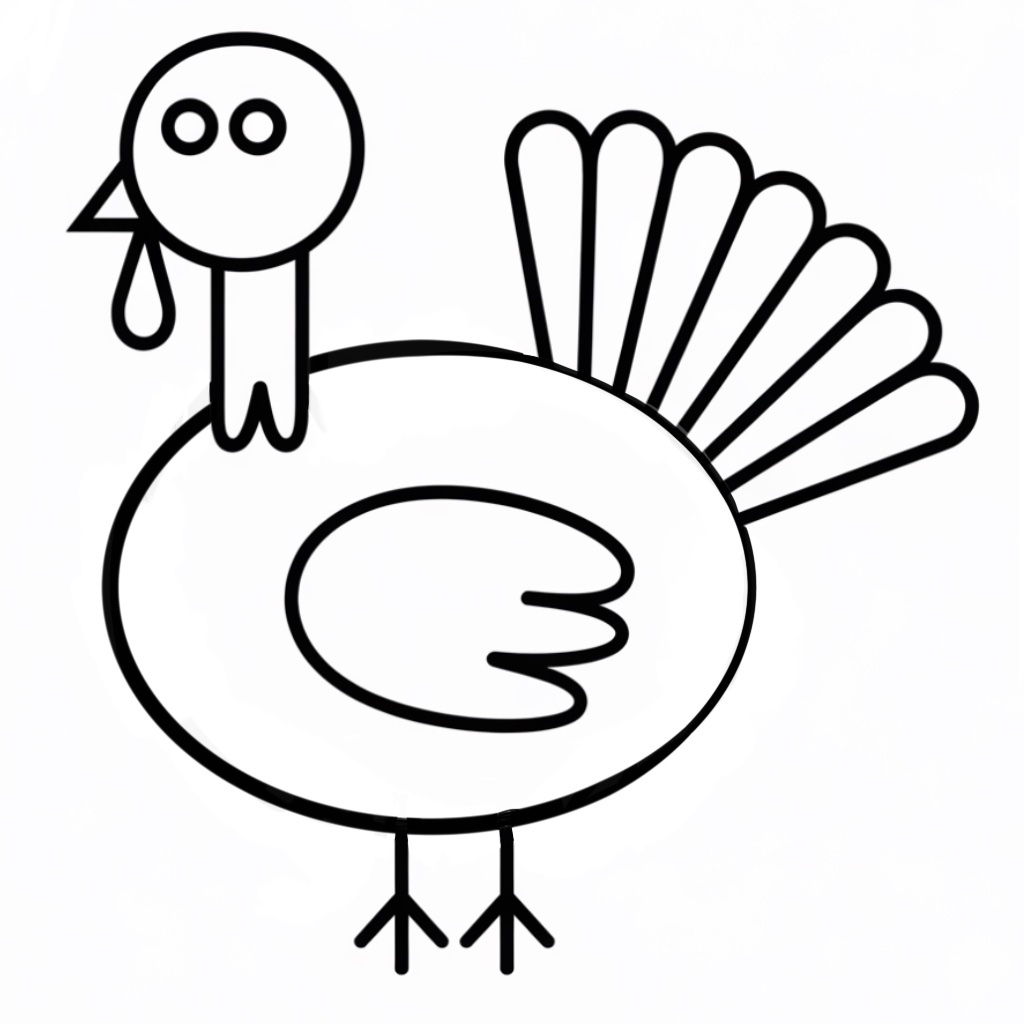Step-by-Step Turkey Tutorial
Why draw turkeys???
Drawing fall turkeys isn’t just about cute pictures—it’s a fantastic way to help kids learn, grow, and have a ton of fun. Here are some reasons to consider teaching this lesson:
1. Drawing helps kids build their tiny hand muscles.
2. Turning simple shapes into a turkey sparks creativity. Kids start seeing the world in exciting new ways.
3. When kids finish their turkey drawings, they feel super proud. It's a great confidence boost.
4. Figuring out where to put each shape helps kids develop critical thinking skills.
5. Drawing with shapes is a sneaky way to teach math. Who knew turkeys were so educational?
6. Drawing a turkey can lead to chats about Thanksgiving and traditions.
7. Adding little details to their drawings helps kids improve their concentration.
8. Each turkey is a little masterpiece that reflects the child's personality.
So, with that, let's get started.
1. Start by drawing a big oval in the middle of the paper. This will be the turkey's body.
2. Draw a small circle above the turkey, to the side a little.
3. Draw two lines down from the head to the body. This makes the neck. You can draw a bumpy line between the lines or draw a straight line.
4. Draw a small triangle on the side of the head for a beak and two small circles inside the head for the eyes.
5. Draw a curved shape under the head for the waddle.6. On the back of the oval body, draw ling curved shapes for the tail feathers. Draw was many as you like.
7. Inside the body, draw a "C" shaped curve for the shape of a wing. On one end of it you can draw a bumpy line to make it look like feathers are sticking out.
8. On the bottom of the turkey, draw two straight lines for the legs. Then, draw three lines out from each to look like the turkey feet.
What can you ado after you draw it?
You can fill it with pattern.
You can add a background.
You can color it in.
Where can you find turkey lessons that are ready to hand to a sub?
If you would like some ready made art sub lessons and early finishers worksheets, check these out in my TPT shop:
Art Sub Lessons.
Click to see
Create a Turkey in Disguise print and go lesson. You can buy this, print it out, and you are ready to teach it. Or add it to your wish list for later!
Click to see the worksheet
Create a Turkey in Disguise early finishers worksheet. It is ready for you to purchase and print out or you can add it to your wish list!























